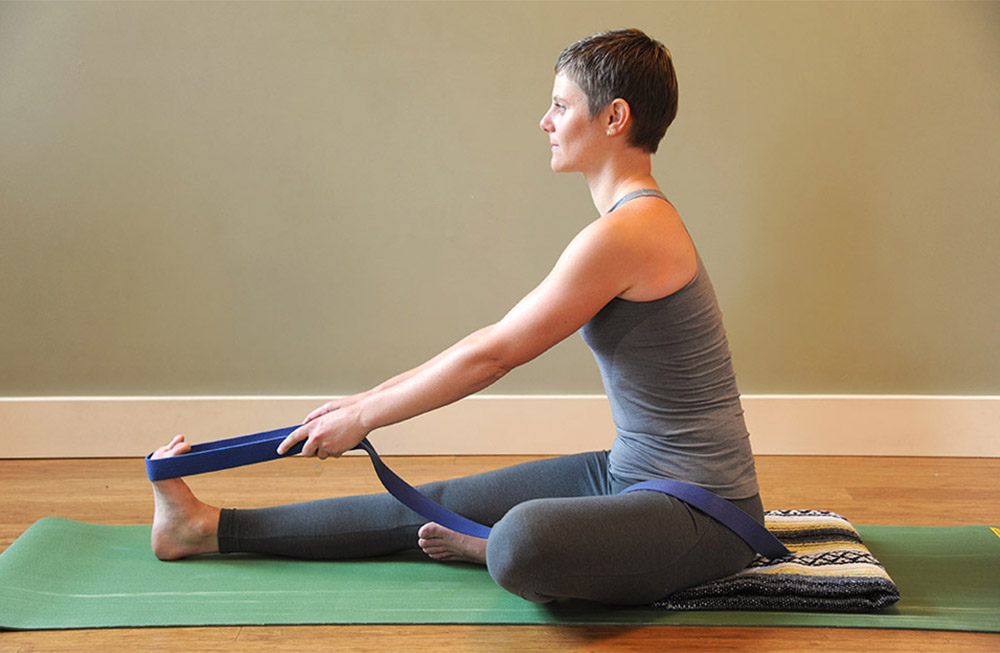
Earth Week is a great time to recommit to greening our lifestyles. This includes all areas of our lives—how we eat, how we travel, how we work and how we play. It also includes how we practice yoga. Are we practicing sustainable yoga? And how would that look?
In the past decade, the yoga products industry has stepped up to the plate for the environment. We now have lots of choices: mats made from rubber, jute, PER and TPE; cork, bamboo and recycled blocks; and yoga towels made with bamboo and PER, to name a few. We can use our buying power to support a cleaner, more sustainable environment. This is one way to green our yoga practice.
What Is Sustainable Yoga Practice?
But how sustainable is your practice itself? One of the wonderful aspects of asana practice is that it can help us replenish the prana we spend during our daily activities. We take in prana through food, water, breath and what we “feed” our minds. We spend it when we talk, move about and use our brains to think and/or solve problems as we move through our days. Asana practice, with its unique marriage of breath and movement, can help us restore our energy reserves—as long as we practice in a way that is sustainable.
In the same way that leaving a light on in a room you’re not occupying wastes energy, over-engaging in different parts of the body can waste and deplete energy. Since all is connected within our bodies and minds, when we practice any asana, nothing is left out of the benefits. However, there are parts of the body that need to engage, and other parts that can simply settle back and receive.
How to Practice a Sustainable Yoga Forward Bend
- Sit in Danadasana (Staff Pose) on a yoga mat.
- Palpate your lumbar spine. Are the “knobs” of the spinous processes poking out? If so, sit on a folded yoga blanket to elevate your hips. Make sure your pelvis is tilting forward so that your spine can be neutral, not rounded.
- Root your sit bones and your heels. If you keep your knees bent in forward bends, a variation that protects your back, sacroiliac joints and hip joints, place a rolled-up yoga blanket under your knees so that you can ground your legs more effectively.
- Bend forward from your hip joints, not from your waist, any amount. Stop at the angle where you can keep your spine long.
- If you find that you’re straining to reach toward your feet, use a yoga strap to connect your hands with your feet. Loop a strap around your feet and pull gently on the ends to help you sit upright.
- Now move your awareness up your body. Are you contracting your abdomen? Do you really need to tighten your belly? When you tighten your abdomen, how’s your breathing? When you hold your belly in constant contraction, your diaphragm can’t move freely, inhibiting the flow of prana-rich breath. Let go of your abdomen.
- Check your shoulders, throat and facial muscles. Do you really need to tighten your shoulders, your throat or any part of your face? Soften your entire upper body so that you feel your torso and arms oscillating with your breath. In this way, your body is moving with the breath instead of against it. Struggling with yourself depletes energy. Working in partnership with your breath replenishes it.
Slow Down
If you feel tired or agitated after your asana practice, you might want to re-examine how you’re practicing. Asana practice is supposed to replenish us, not fatigue us. Maybe you could use a longer Savasana. Judith Hanson Lasater recommends at least 15 minutes for Savasana if you want to relax your body completely and allow your mind to settle.
Slowing down might be a good strategy. Not only does a slower practice tend to build rather than deplete energy, but it gives you a chance to investigate how you’re practicing—whether you’re spending energy in parts of your body that don’t need to be working so hard.
The Power of Choice
I like to think of my yoga and meditation practices as the time when I get to observe my habits of body and mind. This is where the true power of practice lies. When we see clearly that we are practicing a habit that may be causing difficulty somewhere else in our lives—e.g. tensing our shoulders or jaw in asana practice and then complaining of neck and shoulder tension—we have a chance to make a different choice.
So if I feel that something I’m doing in my yoga practice is draining my energy, I can start to dismantle my old habit and cultivate a newer, healthier one. Over time, that new habit integrates into my daily life. When my mind and body are sustained, I feel more self-contained and less likely to go outside myself to have my needs met, which brings us back to sustaining our beautiful planet.
